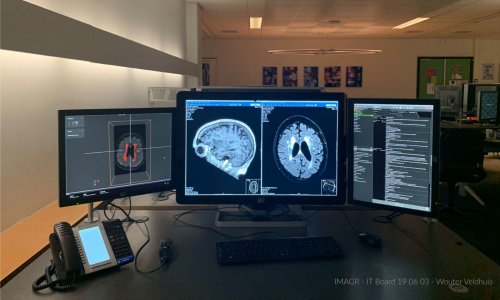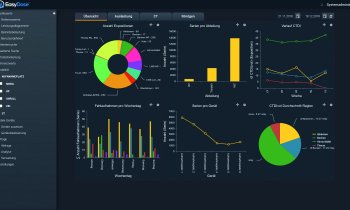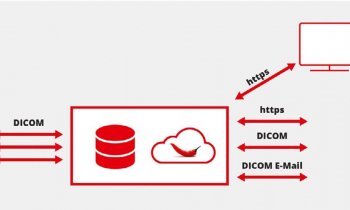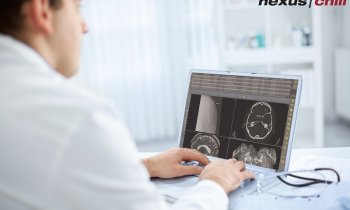The diako’s universal medical archive
Embarking on a large-scale refurbishment and building programme, which included building four new high-tech operating theatres, planning for medical video and photographic documentation became a key issue at the diako hospital in Augsburg, Germany.


To upgrade hospital communications in line with building upgrades and new operating theatres, the diako hospital in Augsburg needed special software solutions because, as the hospital’s quality assurance manager Rainer Lederhofer pointed out, nowadays operating theatre videos and still images are not only relevant for research, teaching and training, but also important in documentation, treatments, communication between doctors and patients, and finance.
The diako’s IT team needed to link the operating theatre, archiving and HIS and safely store all documentation with legal compliance in an innovative, medical universal archive. The IT team decided to implement its ideas with the help of special HD cameras supplied by Storz.
Picking up the tale, Bianca Brinkmann, head of IT at the hospital, added: ‘We didn’t have the required software solution to link everything. The images and videos had to be safely archived and closely networked with our Agfa HIS for our users, and had to be available across the entire hospital.
‘We obviously had specific requirements for a software solution for operating theatre documentation. It had to offer interfaces, still image functions and HD support. However, we also acknowledged the growing requirement all across the hospital for the comprehensive and all-encompassing administration of all data relating to patients.’
The IT head cites ultrasound scan images, photographic documentation, the results of previous examinations brought into the hospital by patients on CDs, scanned patient files and the results of examinations carried out with DICOM devices, such as C-arms, as examples.
‘We deemed it compulsory to look at all data relating to patients in the context of this project, independent of the data format and origin,’ Peter Lederhofer continued. ‘We wanted a universal medical archive to administer this data in a standardised form, distribute it all across the hospital and also make it available to doctors and facilities outside the hospital.’
That approach also appeared to be the most economic because users as well as the IT staff could work with just the one system. ‘The medical product synedra AIM was best able to pick up on our concept of a universal medical archive,’ Peter Lederhofer said. ‘We also felt that synedra conveyed competence and came up with innovate solutions, based both on recommendations and our own personal contact with the company.’
HIS integration
In summer last year, the team and synedra began to implement the IT project. Next to the installation of the backend infrastructure based on VMware ESX and of the connection of the existing image, video and multimedia sources (Storz HD cameras, various C-arms, ultrasound scanners, patients’ CDs brought to the hospital, etc.) the focus of the project team was clear: ‘We are convinced that the objective of optimised patient care goes hand in hand with optimised work flows for our users,’ Bianca Brinkmann said.
Therefore, from the technical aspect, synedra’s universal archive had to be closely networked with the Orbis HIS from Agfa -- something that Peter Lederhofer believes has been achieved very well by all.
From a user’s point of view the HIS is the central point of entry into the data available in the universal archive. From the HIS, data can be easily accessed and then displayed in the synedra DICOM multimedia viewer.’ The HIS and the universal archive also work together closely with the data acquisition. Interfaces were designed ranging from the simple handover of patient data right down to the creation and transfer of work lists.
Objective achieved
Even the first experience with operating the universal archive proved that considering users’ needs during each phase of the project has paid off, is confirmed by internist Dr Nagel: ‘The promise to optimise workflows was kept to our full satisfaction during the implementation of the project. We now have immediate access to the entire multimedia patient file everywhere in the hospital, and with synedra View, the viewer accessible via the HIS, we have the necessary tools to display and process all kinds of data. This ranges from standard image processing functions via MPR functionality and the display of PDF files right down to video streaming from the archive and playing videos in HD quality.’
Expansion plans
‘With synedra AIM we now have many opportunities that we will want to utilise in the future,’ Rainer Lederhofer said.
One of these expansion plans is the ability to send the hospital’s partners relevant examination results via DICOM e-mail, or also the introduction of a basic diagnostic procedure for ultrasound scan examinations, where relevant image data and indexing information are integrated into a PDF document and then stored.
‘We also have plans to implement a scanning project in the retirement and residential care homes for the elderly, which are part of the diako. This will entail the integration of the synedra AIM system with the resident management system so that the files of all residents can then be stored in the universal archive with legal compliance.’
Continuity of care
Employing around 250 people, the 135-bed diako hospital is used by external general practitioners and medical specialists who admit and tend their patients within its walls. Thus around 7,500 in-patients and 2,500 out-patients annually see their own physician from the beginning to the end of their treatments.
15.02.2012










